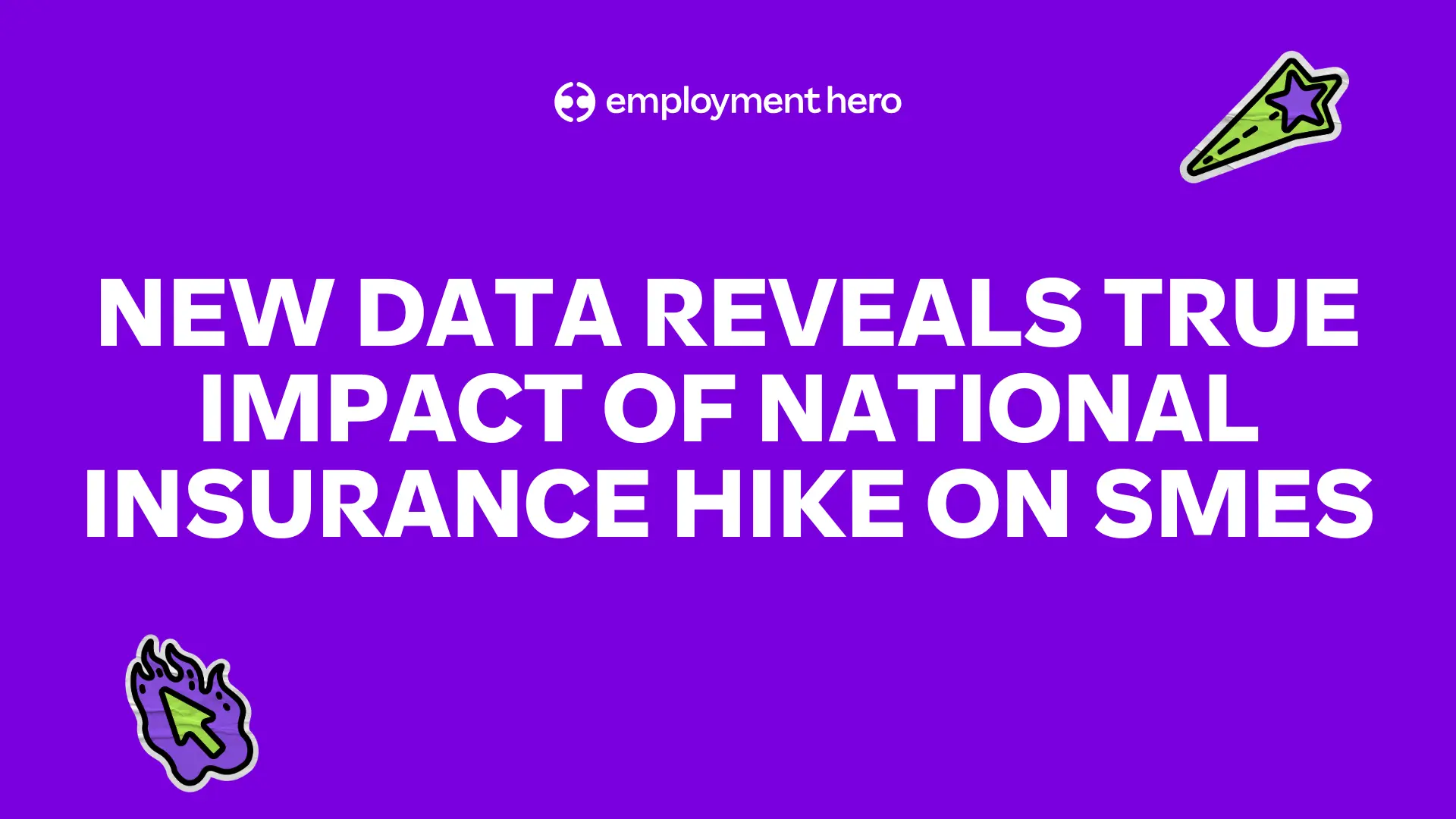What is turnover contagion, and how can business owners avoid it?

We’ve all heard of The Great Resignation, but you might not have heard about turnover contagion. While it’s not a new phenomenon, our Talent Insights Report found that redundancies or headcount reductions are the top motivators for job-seeking in the UK in 2023. 42% of those looking for a new role were doing so for this reason. So, we’ve put together some more information and advice to help you diagnose and control turnover contagion.
What’s ‘turnover contagion’?
Turnover contagion is the ripple effect of one team member’s departure. Their decision to leave could be personal or it could be due to redundancy or restructuring. Said departure results in further resignations within the organisation that can spread throughout multiple teams.
What can spark mass employee turnover?
The reason for a series of resignations could come off the back of redundancies, disquiet in the team (or amongst multiple employees) a very popular or influential team member departing, or simply be a characteristic of your team’s culture.
A culture of contagion
A study from SHRM showed that an employee’s decision to leave is influenced by their coworkers, especially in close teams. The psychological effect of resignation can impact teams differently depending on whether you have a collectivist or individualist culture. For a collectivist culture, losing a key player in the department or business growth plan can be derailing. In an individualist culture, seeing someone else made redundant or moving career could spark a desire to self-preserve or seek success elsewhere in a similar vein. Regardless of your business’ culture, hybrid and remote work has only heightened the influence of a team member leaving. We’re seeing teams grow increasingly tight-knit as we work in small silos away from office spaces. The knock-on effect of losing staff in smaller teams can be monumental to your remaining employees.
Redundancies or restructuring
If you’re going through a stage of restructuring your business, or reluctantly find yourself in need of making redundancies, this could lead to uncertainty. Not only will your staff wonder why you’ve decided to make your decision, but they’ll also begin to worry about their position. With the UK on the brink of a recession and the cost of living crisis at an all-time high, not only is this a difficult time for your employees, but it could also be a difficult time for your business to stretch its budget. There is an unfortunate likelihood that you will have to make decisions about redundancies in the near future. The best approach is to be prepared and keep your staff in the loop as the situation evolves. Staff in the dark are much more likely to get nervous, lower productivity or worst case scenario jump ship.
The departure of a person of influence
Every business has its key players. These might be people of influence within your industry, perhaps inspiring others to join your company. Or, they might be people who increase morale, are great leaders and mentors, and act as the glue or inspiration in trickier times. If these people find new jobs, it can be destabilising for their peers and colleagues. Your remaining team might question their place in the business without the person of influence. In worse circumstances where disagreement or disciplinary action leads to the person of influence leaving, the knock-on effect could be significant.
Disquiet in your team
If there are a lot of employee complaints or issues that aren’t being dealt with or are being drawn out, you’ll likely have some disquiet in the team. These issues are normally small but mount up over time and can spill over into the first team member’s resignation. If this person was part of a team that shared their sentiment, you could experience turnover contagion as they all look to find similar opportunities.
Why does turnover contagion matter to your business right now?
As we mentioned earlier, our research found it the number one reason for employees to change careers in 2023. It ranked above poor relationships with management (40% of respondents), lack of managerial responsibility (35% of respondents) and poor company culture (31% of respondents) – all themes we know are highly important in retaining staff. There has been an undeniable rise in redundancies across the UK with sources like The Guardian reporting on a loss of nearly 15,000 UK retail jobs in 2023’. Labour market data also showcased that the redundancy rate increased to levels similar to those seen prior to the pandemic. As a business leader, it’s likely you’ll need to think about turnover contagion in the near future, and may even find yourself in the unfortunate position of handing out redundancies. While many businesses maintain hybrid and remote working, we see workplaces being (almost ironically) more connected than ever before. Relationships between colleagues have only strengthened, teams often working closely together in isolation and in smaller numbers. It’s also important to remember that humans are herd animals. We often replicate behaviours we observe around us. And if the sentiment is poor and people are leaving, we’re much more likely to follow suit. This can be especially true where new employees are concerned. And, with employee retention being incredibly important in a post-pandemic world, you must try and avoid turnover contagion by spotting the signs early and doing what you can to avoid its spread.
What are the knock-on effects?
Turnover contagion can have some lasting effects on your business including:
Uncertainty
Those who remain may feel uncertain about their place, position and future within the company. When a series of employees leave, change is imminent; change in personnel, processes and much more. It can have dramatic impacts on the culture and workplace environment, so your remaining team is likely going to be concerned about that.
Low morale or confusion
If a series of your team members all move onto new opportunities, it could leave your remaining staff with a mixture of low morale and confusion. They could feel down about not finding new opportunities themselves, leading them to question their capabilities. Oppositely, it could induce imposter syndrome if you give them a new position or set of responsibilities that they may perceive to be due to employee turnover, not based on performance.
Increased workload
A loss of staff means an increase in workload for your remaining employees. You may find yourself looking at employees who are stressed at the idea of taking on the extra workload, leading to decreased productivity and low-quality output. A higher workload can also lead to an increase in your team’s burnout risk and job dissatisfaction.
Impacts on your employer branding
Turnover contagion can put your Employer Brand at risk. A lot of staff leaving at once doesn’t look good for any business, and with the vast majority of us on social media and the existence of employer review sites such as Glassdoor, it won’t be long before negative news spreads.
How to mitigate the risk of turnover contagion
There are tools and strategies that you can use to ensure that turnover contagion doesn’t break out within your business. If you do have multiple staff members depart in quick succession, we recommend you put the below actions in place from the day the resignation becomes public knowledge. Keep in mind, these actions will be far more effective if they’re common practice and don’t feel like a knee-jerk reaction to a series of resignations. It’s worth considering how to implement them now to future-proof your team.
Understand your employee engagement
Understanding your employee engagement will help you be a better employer. You’ll gain an understanding of your team’s sentiment towards their work, managers and colleagues as well as what’s going well and what isn’t. It will help you praise and reward your employees accurately, catch them before they become disinterested in work, and stop their productivity from dwindling. Understanding where they are personally and professionally will help you show them they’re an asset to the team.
Know which employees are at the most risk
If you’re not able to have frequent check-ins or 1:1s with your team, tools like employee happiness surveys can help you find your at-risk employees. If you know you have certain staff members going through a difficult time, intervention becomes easier and more timely. If you’re struggling to re-engage your staff, you might want to consider revamping your employee value proposition.
Watch for shifts in employee behaviour
While we’re certainly not suggesting that you introduce a surveillance state within your workplace, we do suggest that you pay attention to employee behaviour. This could be picking up on:
- Throwaway remarks that jest at complaints or workplace issues
- General disinterest or lack of engagement in work activities
- Chatter or activity around updating their CV or portfolio
- Isolating themselves from the remaining team
While you might not be able to see and hear these behaviours, you can certainly survey and ask your team for anonymous feedback that can track changes in behaviour.
How you can prevent turnover contagion with strong workplace culture
While the above pointers will help you fight turnover contagion from starting or spreading, there are ways you can kill signs of it at its source by ensuring you have a contagion-averse culture. We can’t promise immunity from the contagion, but we prescribe the following:
Advocate for psychological safety
Psychological safety gives your employees the power to make mistakes, speak out and try new things with the full backing and support of the team no matter the results. It enables your employees to learn together, grow together and feel confident in themselves. Make sure your team is well-versed in the fundamentals of psych safety. Every staff member should help foster an environment where people feel:
- Included
- Safe to learn new things
- Comfortable to contribute
- Supported in challenging the status quo
Be consultative in your approach to leadership and you’re much less likely to have a team that bottles up their issues, hides workplace disgruntlement and could unexpectedly leave.
Be open and honest about… everything
One thing that can spark discomfort or unrest in your staff is when they feel they are being misled by their manager or company. Transparency about your company’s position and the decisions you make are fundamental to winning over your team. Your business and leadership team should be open to criticism and hard questions and be honest in how they address them.
Get valuable feedback from a team member’s resignation
When someone resigns, look for honest and open feedback. You could make use of an employee exit template to ensure the feedback you get is actionable. Don’t let good critique go to waste, it could help you retain staff and make sure one resignation doesn’t turn into many.
Don’t ignore uncertain times
A lot of businesses learned the hard way during lockdown and the Great Resignation that you should be honest about uncertain times. The worst thing leaders can do here is bite down on their mouthguards and see what happens. Acknowledge tough times, and make sure your staff know how you plan to get through them. Involve them in decision-making, if you can. Make sure they’re aware of the eventualities, good and bad.
Promote autonomy
Autonomy means letting your team decide how they’re going to be their most productive. That doesn’t mean leaving them to it;, it means facilitating and guiding them when they need it, then leaving them to do their thing. Autonomy in the workplace has been found to inspire self-motivation, achievement and a stronger likelihood to engage with work. All of which inevitably results in a boost in productivity. Of course, this can’t be a one-size-fits-all approach and some employees may need more support. The better you and your HR team know your employees, the better chance you have of building productive working environments.
Reward and invest in your team
One way you can fend off turnover contagion and create a standout employee experience is to know how your staff like to be rewarded or praised and what they’re looking for to achieve their goals. Not every one of your staff members is going to enjoy a shout-out on Slack or in front of the company. They might prefer a personal email or in-person chat to get feedback. It pays to understand how to reward and recognise your talent. Investment doesn’t always mean a raise in salary either. While we all work for money, and a lot of your staff may be driven by a flat wage increase, others might want more learning opportunities, flexibility in their days, weeks or something else. We all have different goals, and if they know their leaders are willing to see them and invest in them, they’re less likely to look for opportunities elsewhere. If you’re looking for more tips on how to build a winning culture, take a look at our leader’s guide to company culture.
Don’t let the contagion spread
To make employment easier and more rewarding for your business you must join the fight against turnover contagion! Download our Talent Insight Report to find valuable information on trends affecting employment this year.
Related Resources
-
 Read more: Workplace Trends for 2026: What’s Shaping The Future of Work
Read more: Workplace Trends for 2026: What’s Shaping The Future of WorkWorkplace Trends for 2026: What’s Shaping The Future of Work
AI & automation, micro-learning and trust are shaping the new year. Explore the essential strategies to build a resilient, future-ready…
-
 Read more: Blue Monday: Make It the Most Productive Day of the Year for Your Team
Read more: Blue Monday: Make It the Most Productive Day of the Year for Your TeamBlue Monday: Make It the Most Productive Day of the Year for Your Team
Turn Blue Monday around. Discover how your business can transform the year’s most depressing day into a boost of positivity…
-
 Read more: NEW DATA REVEALS TRUE IMPACT OF NATIONAL INSURANCE HIKE ON SMES
Read more: NEW DATA REVEALS TRUE IMPACT OF NATIONAL INSURANCE HIKE ON SMESNEW DATA REVEALS TRUE IMPACT OF NATIONAL INSURANCE HIKE ON SMES
NIC changes will cost medium SMEs £18,000 annually. New analysis shows firms with >8 employees face steep costs, while Midlands…





















